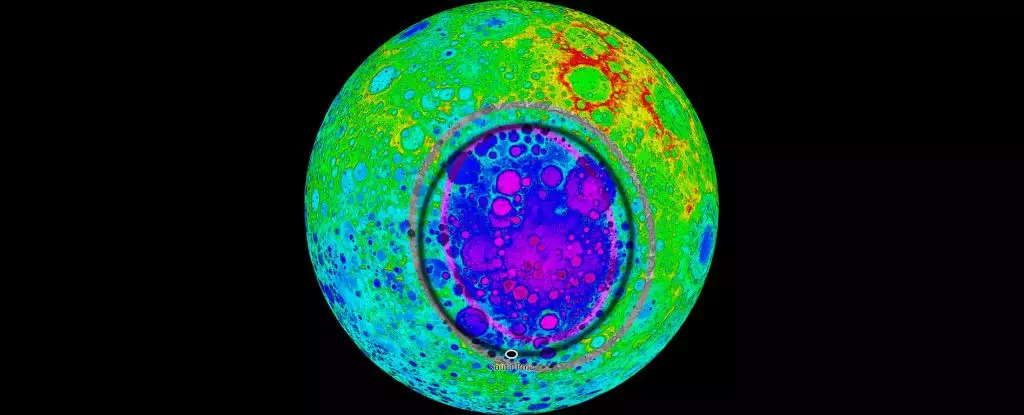The Moon’s surface is a cosmic time capsule, preserving a rich history written in scars and craters that have accumulated over billions of years. As Earth’s only natural satellite, the Moon offers a unique perspective into planetary evolution, particularly through its most prominent geological features. Among these, the South Pole-Aitken (SPA) basin stands out—both for its massive size and its importance to our understanding of lunar and solar system history. Recent research sheds new light on this ancient impact structure, suggesting it may hold more secrets than previously believed and could play a vital role in future lunar explorations.
Spanning approximately 2,500 kilometers in diameter, the South Pole-Aitken basin dominates the lunar landscape and covers nearly a quarter of the Moon’s surface. Formed more than 4 billion years ago, this colossal crater is among the largest in the Solar System and serves as a record of the violent history of our celestial neighbor. The sheer scale and age of the SPA basin make it challenging to study, as time and additional impacts have complicated our efforts to understand its structure and formation.
This monumental formation presents a specific challenge to scientists: unraveling its complex history to gain insights into the Moon’s past. Some existing hypotheses suggest that the crater originated from an oblique impact, characterized by an oval shape due to the angle at which the impacting body struck the lunar surface. This notion led researchers to believe that debris ejected during the collision might be unevenly distributed, leaning towards the direction away from the lunar south pole.
A recent study undertaken by geologists, including Hannes Bernhardt from the University of Maryland, calls into question this conventional understanding of the SPA basin’s formation. Utilizing data collected from NASA’s Lunar Reconnaissance Orbiter (LRO), which has been mapping the Moon since 2009, Bernhardt and his team focused on over 200 mountain features located at the basin’s periphery. Their analysis aimed to investigate whether these geological remnants might signify the original crater rim.
Upon completion of their mapping efforts, a surprising revelation emerged: the configuration of these features appeared to be far more circular than anticipated. According to Bernhardt, “A rounder, more circular shape indicates that an object struck the Moon’s surface at a more vertical angle, possibly similar to dropping a rock straight down onto the ground.” This observation suggests that the impact may have spread debris more evenly across the basin, contrary to previous theories.
The study of the SPA basin has significant implications for future lunar missions, particularly the Artemis program, which aims to bring astronauts back to the Moon to conduct scientific research. The revised understanding of the basin’s impact dynamics implies that future explorers may discover rocks from deep within the Moon’s mantle or crust, offering unparalleled access to geological material typically beyond reach. “This circular impact implies that debris from the impact is more equally distributed around it than was originally thought,” Bernhardt explains, emphasizing the potential for groundbreaking discoveries about the Moon’s formation.
One of the most intriguing aspects of the Moon’s geology is the mystery surrounding its origin. The prevailing theory posits that the Moon formed from debris ejected after a colossal collision between the Earth and a Mars-sized object during the early Solar System. However, alternative theories exist, including coalescence from a cloud of material or gravitational capture. A more vertical impact angle could also illuminate other enigmatic features observed in the basin, such as the high-density crust detected in the region.
The implications of this new research extend beyond mere geological curiosity; they resonate within the broader narrative of our exploration of the Moon and the Solar System. With the potential to access samples of lunar material that date back to the Moon’s formative phases, scientists could glean vital information about rock types and mineral compositions that shed light on the Moon’s evolutionary history.
As lunar exploration resumes and evolves with missions like Artemis, understanding the SPA basin’s complexities will be crucial in framing our knowledge of not only the Moon but also planetary mechanics and formation. The dialogue surrounding the Moon’s history continues to evolve, and the enigmatic South Pole-Aitken basin stands at the forefront of our exploration, inviting researchers to unlock its mysteries and deepen our appreciation for Earth’s ancient companion.

